Eurail Passes are famous as a way to save money while exploring Europe, but they are also confusing and often misunderstood. They are still an amazing money-saving tool for certain types of travelers, and not a wise idea for most others. Before Europe introduced dynamic rail pricing (like airfares, where the price varies depending on when you buy it), a Eurail Pass was an easy way to save money since all tickets had fixed prices that were generally fairly expensive. These days most travelers can save far more money just by buying their train tickets at least a few weeks in advance.
That said, Eurail Passes are still great for longer trips and especially for people who like to make plans as they go. Dynamic rail pricing made advanced tickets much cheaper, but it also made last-minute tickets MUCH more expensive. Below we will discuss Eurail Passes and whether they are a good idea for your trip or not.
Disclosure: This is a reader-supported website and some of the links are affiliate links where a small commission is paid to help keep this site going.
Note: This article was written in 2012 and has been continuously updated since then, so all information is current as of April, 2024.
Eurail 2024 changes: New countries and a mobile version

Aside from that it’s just the normal fact that they have updated the timetables as of December 2023 and have a few promotions going on, but those usually don’t happen over the busy summer season.
Eurail passes are now available in a mobile version
Until very recently, Eurail Passes were only available in paper form and they were quite confusing at first. You’d get a pass with a series of empty boxes on it and you’d need to enter your trip before you’d use your pass each day and then have the first conductor verify it. If you lost your ticket (and this was not uncommon), it was a whole ordeal to attempt to get a replacement.
Again in 2024 Eurail offers a fully mobile version that is delivered instantly to your mobile device with no delivery fee. And if you somehow lose your phone, you can resume using your Pass on your replacement with no extra headache. This is MUCH more convenient in every way and as long as you can keep track of your phone you’ll always have your train pass handy.
If your trip will be 2 weeks or less, a Eurail Pass probably won't be worth it

Eurail Passes are ideal for travelers on longer trips, and especially those who don’t want to plan all of their destinations and dates far in advance. If you have your itinerary pretty much planned out and you don’t require much flexibility, you’ll be far better off just locking in your dates and buying your train tickets as early as you can. Again, they can be surprisingly cheap if you buy 2 to 4 months out.
If you are age 27 or younger, a Eurail Pass is probably worth it

With this in mind, if you are lucky enough to still be 27 or younger, you should seriously think about getting a Eurail Global Pass Youth, partly because the sense of freedom instantly gets more expensive at age 28. The age cutoff was 25 until recently, so this change is a great deal for anyone who will be 26 or 27 at the start of their trip.
You aren’t guaranteed to save money by buying a Youth Eurail Pass, but chances are good that you WILL save money and you’ll definitely save a lot of hassle as well. Especially now that Eurail Passes come in a mobile form, it’s even that much more convenient to just hop aboard any train that is about to leave the station and not worry about buying or even having a ticket. Especially for young people, it can be really fun and exhilarating to literally just walk into a train station with your backpack and look at the departure board and then decide where to go at that moment.
If you are age 60 or over, a Eurail Pass could also be great value
Another fairly recent change is that anyone who is 60 years or older at the start of the use of a Eurail Pass now gets 10% off the normal adult fare. That new discount is going to make this a great value for many travelers who might have been on the fence about buying a full-price pass before.
>>>Check prices on Eurail Passes
If you are planning on traveling in 1st Class anyway, a Eurail Pass is probably worth it
Most 2nd Class trains provide similar comfort and legroom to Business Class airline seats, or at least close enough, so for most people it’s not worth the added expense for 1st Class. However, if you are rich or elderly or fear contact with strangers, a 1st Class Eurail Pass is probably worth it no matter what.
Not only do you get much more comfort and legroom in 1st Class, with only 3 seats across instead of 4, but there is another advantage to 1st Class on European trains. Since it’s mostly business travelers and wealthy people traveling in 1st Class, the carriages are almost always mostly empty except in the mornings and late afternoons between large cities. In 2nd Class the only available seats might be two seats in an 8-seat cabin with all the other seats taken up by a loud family or a group of rowdy friends. In 1st Class you are all but guaranteed a peaceful ride, and usually plenty of empty seats from which to choose.
A hidden Eurail Pass benefit: Making extra stops on travel days for free

Brussels in particular is one I recommend a short stop in because the small historic center around what they called the Grand Place is amazing and gorgeous, while the rest of the city is rather boring by European standards. With a Eurail Pass you can jump off the train in Brussels and explore the city center for a few hours (luggage storage is cheap and easy) and maybe have lunch, and then hop on a later train to complete your journey to Amsterdam. There are opportunities like this on many if not most trips between larger cities, and if you buy the point-to-point tickets you have to stay on the train you booked.
Another example is the high-speed train between Barcelona and Madrid, which takes about 2.5 to 3 hours in each direction. There are some interesting cities in between, but in this case you could take a morning train from Barcelona to Madrid and then check into your accommodation, and then hop on another train from Madrid to Toledo, which takes about 30 minutes and costs €14 each way. Toledo is a historic and fascinating town, but it’s also pretty small and you can explore the main sights in an afternoon. With a Flexi Eurail Pass where you buy a certain number of travel days, you can save more money by adding on these sorts of nearby stops on travel days.
If you'll be touring major cities within ONE country, a single-country pass might be perfect, and Second Class passes are available for all ages
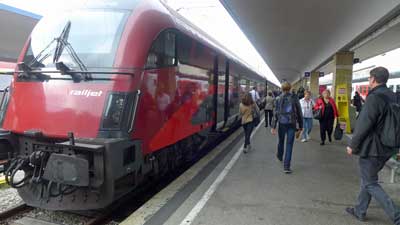
Single-country passes are still available and they MIGHT be good value for you, but it depends on which country and how much traveling you’ll be doing. If you plan on going all over a larger country such as Germany, France, or Spain, and especially if you like to make plans as you go, a Single-country pass for one of those might be your best deal. On the other hand, smaller countries (such as the Netherlands) or countries where train tickets are already fairly cheap (such as Italy) might be harder to get value out of. Long story short, for single-country passes you really need to check fares of the places you plan on going and see how they add up compared to the pass.
>>>Check prices for Single Country Passes
Eurostar (between London and Paris or Brussels or Amsterdam) tickets are now included for Eurail Pass holders for a €30 reservation fee
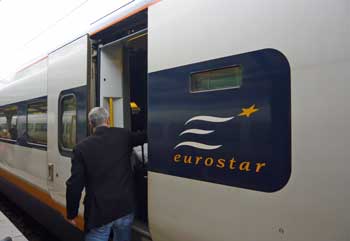
Our recent tests show that Eurostar fares one-way from London to Paris can be as low as €49 if you book about 3 months out, or as expensive as €214 for the same seat if you wait until the day of travel to buy. Round-trip/return tickets can be even cheaper if there is a promotion running.
>>>Check Eurostar prices
If you are on a really low budget, a Eurail Pass isn't a good idea
Here’s the thing. As we’ll discuss below, there are many potential benefits to Eurail Passes, and they will often save you money, but they do cost a lot and they only really save you money when traveling in the more expensive countries.
So let’s say you have a flight to Rome and then US$2,000 to last you a month after you arrive. Buying a Eurail Pass before you go would help you see a lot in that month, but you’d practically need to sleep in parks for your funds to last the whole time. You’d be better off moving slowly in the southern countries, or just in Italy itself, as a way to have the best holiday on your budget. You might also be tempted to use a Eurail Pass mostly on night trains so you can save the cost of a hotel or hostel, but those aren’t ideal for most of us.
The cheapest way to get around Europe by rail is to buy all train tickets online at least a couple months in advance. The fares are low, but they are non-refundable and non-changeable. See how far in advance you should buy train tickets to get those attractive fares.
If more than a little of your travel will be in eastern Europe, a Eurail Pass isn't a good idea
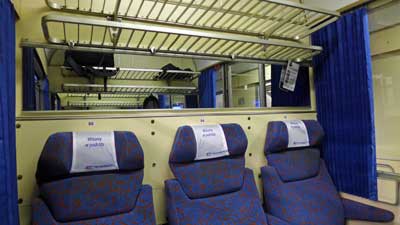
The good news is that the trains operating in this region, and the buses that operate alongside and/or where trains aren’t running, are quite cheap. So if any significant part of your trip will be into this region, a rail pass doesn’t make sense.
Basic types of Eurail Passes
Long gone are the days of the simple options, replaced by specialized passes that are meant to appeal to different styles. It should be pretty easy to figure out which is best for you, and then keep going down the page to decide if it’s worth it at all.
Eurail Global Pass – 4,5, or 7 days within 1 month or 10 days within 2 months
Until recently the minimum number of travel days with 10 days within 2 months, but now you can buy as few as 4 days within 1 month for about €200 to €250 (for first class). This can actually be an interesting strategy if you are planning many shorter and cheaper trips (like within Italy or Eastern Europe), and also 4 or 5 longer trips such as Berlin to Amsterdam. This way you can buy only 4 or 5 travel days and only use them for your most expensive travel days, and just pay as you go or buy cheap advance tickets for your other journeys.
Eurail Global Pass – 15 to 90 consecutive days
This variation allows for unlimited travel on the system for between 15 and 90 total days. They are really only a good idea for people who are certain they are going to travel very often, with much of it being in the north of Europe. The problem with them is that if you really try to get your money’s worth, you will probably ruin your trip by spending too much time on trains in general. On the other hand, if you will be in Europe for 2 or 3 months and plan on traveling around a lot, you can get a LOT of use out of a longer pass. The 3-month pass is around €900 so it’s literally about €10 per day. Imagine going back and forth between Berlin and Munich or Barcelona and Madrid for €10 per day!
One Country Pass
Obviously these are for travel within one country only. Again, they can be great deals if you plan on extensively moving around one particular country.
Where to buy your Eurail Pass
Eurail Passes are cheapest and easiest to buy online, primarily from two main sources which offer all the same products at the exact same prices:
This is a reliable company based in the Netherlands but with fulfillment offices in the US and Ireland. Price of Travel is a partner with this company, and if you use the links of this site we earn a small commission to help keep this site online. Eurail.com is usually cheaper than RailEurope (discussed below) by the way.
They were founded in the 1930s and are based in New York, but owned primarily by the French and Swiss rail companies. They offer free shipping (2 to 3 business days) on all orders of US$399 or more, although now that a mobile version is available, this is meaningless. Price of Travel is a partner with this company, and if you use the links of this site we earn a small commission to help keep this site online.
Reservations on European trains for rail pass holders
For most of the fastest trains between major cities you’ll need to reserve a seat even with a rail pass. It can usually be done just before you leave and the cost is usually around €5. Here’s a full list of which European trains require reservations and which don’t.
Reservations are required on all intercity (longer distance) trains in or involving France, Spain, Switzerland, and Italy. For most trains in Germany, Austria, Netherlands, Belgium, and most of eastern Europe, you can usually find trains that don’t require seat reservations. Often, if you don’t leave until after 9:30am or so, you can ride on any train with no seat reservation, but you have to research each leg to be sure.
How to determine which trains require seat reservations, and also get schedules
You can click on the link just above this section for a list of countries and their seat-reservation policies, but in some cases it’s actually a bit more complicated than that. For example, you can generally ride without a seat reservation on fast ICE (Inter City Express) trains in Germany if you depart after 09:30 in the morning. They do this to free up seats for business travelers who pay full fare, and they don’t mind filling up seats with rail pass holders on trains leaving a bit later.
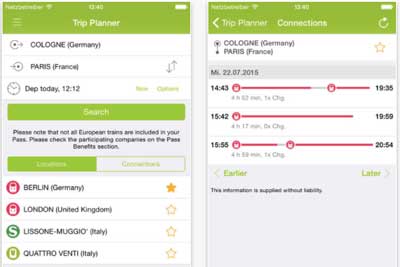
Night trains in Europe are making a comeback
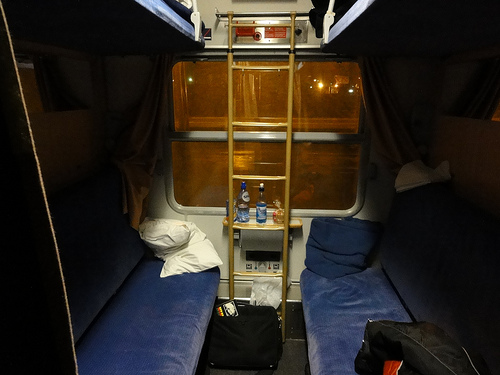
Fast forward to 2024 and night trains are not only expanding service, but they are very trendy. Some of it is nostalgia for the older way of getting around, but most of it is for environmental purposes combined with European hatred for the “low cost airline” experience with RyanAir and Easy Jet etc.
Personally I’m still not a fan of night trains because I find it difficult to sleep on them since they often get decoupled at interim stations in the middle of the night and then coupled onto other trains coming from other places, and I can’t sleep through any of that. But still, they are worth looking into and they are fun to try at least once.
A bit of warning that they tend not to be cheap and even if you have a Eurail Pass you’ll almost certainly want to book a sleeping cabin with a bunk or couchette, and that will come at an extra fee. On the other hand, if you are the sort of person who can sleep sitting upright in a normal seat, then that won’t cost any extra on most overnight trains.
Factors to consider when thinking about any Eurail Pass
Assuming you know which Eurail Saver Pass option is the best one for your type of trip by now, we’ll go over the main factors that should help you decide whether it’s the best idea for you.
Eurail Passes are best for standard ‘medium length’ journeys
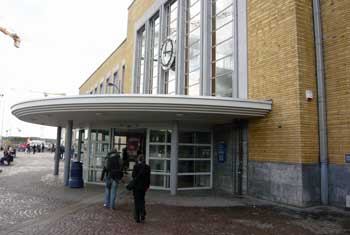
However, if you are determined to travel between Rome and Paris, it’s about a 14-hour journey that will almost certainly be overnight. In this case, a cheap plane ticket is probably better, although taking shorter hops on the train is even better, so spend a day or two in Milan or Lyon on the way instead.
And of course, if you prefer to stop in various small towns between the big ones, then a Eurail Pass won’t pay off, except for the traditional kind for unlimited travel in a given period.
Eurail Passes are better value in northern Europe, France, and Spain, and poor value in Italy
Once you do a bit of research you’ll quickly learn that train tickets (and almost everything else) are much more expensive in Germany, Netherlands, Denmark, Sweden, Norway, and Finland than they are in Greece, Italy, Portugal, and Spain. With this in mind, the regional passes can make sense if you are spending time in the south, but the Global Passes almost certainly won’t. Train tickets in Spain used to be fairly cheap, but in recent years they’ve added new high-speed trains between the major cities, and these are quite expensive.
Unlike most other countries, Italy really subsidizes its train tickets so they are quite reasonable even on travel day, and very cheap if you buy a month or more in advance. For example, you can go between Rome and Florence for around €49 if you buy on travel day, and as little as €19 if you buy well in advance. In most other countries, fares are double or triple that much for similar rides.
So consider your planned itinerary. If more than half of it is in the Mediterranean countries then look into a Regional Pass or just buy tickets as you go, because they tend to be pretty cheap. But if you are planning on spending at least half your time in Paris and places to the north of it, then a Eurail Pass is probably a money saver because those tickets are expensive.
Trains are almost always better than planes
Flying sucks, even in Europe
Until you’ve experienced the joy of traveling around Europe by train you might be tempted to “maximize” your time by flying low-cost airlines between each city. This would be a mistake. In order to get truly cheap airfares you have to purchase long in advance, buying non-refundable tickets. You might also have to commit to flights in the very early morning or in the late evening, because cheap tickets on convenient flights sell out quickly.
And again, most European airports are around an hour outside of the city. They are often on the main train lines, which helps, but still you have to deal with the madness of security and also try to get there at least two hours early. From one city center to any other city center it’s about 5 hours minimum, even if they are close, and those are pretty miserable hours.
Train travel is a positive experience

Not only are all the seats comfortable on trains, but you also have an interesting view most of the time. Better still, trains deposit you in the heart of every city, which is usually the neighborhood with the cheapest hotels and food. It’s a wonderful feeling to step off a relaxing train ride, buy a hot dog or sandwich at a local shop, and then be in your hotel room only about 10 minutes later.
Eurail Passes are better than train tickets alone
As someone who enjoys the process of crunching numbers and looking for value, I have to also mention that I’d buy a Eurail Pass even if it seemed like it would cost a bit more than the individual tickets. With a pass you get an extra element of freedom that is worth a lot more than you might expect until you’ve used one.
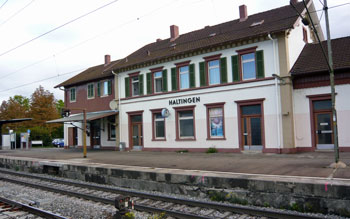
Let’s say you are heading from Amsterdam to Hamburg tomorrow morning. The 09:00 train you planned for might seem a bit ambitious after a long night out, so you can instead opt for the 10:00 or 11:00 train. As long as you walk into Centraal Station 10 or so minutes before departure, you are on. If you are flying you can’t change your ticket, and if you are buying train tickets as you go you have to be in line at the international desk at the train station at least 30 minutes early, and even then you might miss it if they are busy.
Freedom and getting to feel like a big shot
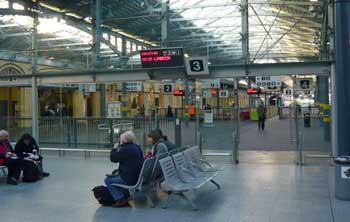
Let’s say you are staying at a hostel in Brussels, and two groups of new friends suggest that you go along with them to their next stops. One group is going to Bruges, which is a short and cheap journey, so you can join them by buying individual tickets (unless you have the unlimited pass, making it free). Then you restart your trip from Bruges, on to your next destination. The other group is headed to Berlin on a night train, which is long and expensive, but with a Eurail Pass you don’t even have to think about the cost. On you go, just like a rich person.
Buying a Eurail Pass is great for those who might run out of money
We all know people who keep meticulous track of every penny they spend, and who are always putting money away for a rainy day. And we all know people who can take a US$100 “entertainment fund” and burn through almost all of it in just a few hours. For the first type of person, a Eurail Pass can help you keep track of expenses, but it’s really the second type of person these are best for.
It’s sad to hear about people who have big plans to see their dream destinations, but they run out of money for transportation halfway into the trip, so they have to just stay put until they fly home. It happens. Locking in your major transportation costs before you leave home, and probably saving money in the process, is a wise move for anyone who isn’t as disciplined as they’d like with their money.
>>>Check prices on Eurail Passes
Bottom line: If you want to keep travel costs down, your choices will usually be a Eurail Pass or buying tickets at least a month or more early
In the last few years, almost every long-distance train ride in Europe has switched to a pricing system similar to low-cost airlines. In other words, tickets go on sale 2 to 6 months ahead of time at very low prices, and they keep getting more expensive as the train fills up and the date approaches. For most trips where a rail pass is possible, this is how things stack up:
Cheapest possible way: Buy advanced (non-refundable, non-changeable) train tickets at least 30 days in advance
Next cheapest way: Buy a Eurail Pass and make seat reservations as you go, usually only a day or less in advance.
Most expensive way: Buy train tickets as you go, or less than a week in advance.
Thinking about it this way should make the choice a bit easier. If you are the type who likes to plan each day and travel segment long before you even leave home, then buy tickets online for the best prices. This can be the best strategy for most shorter trips (10 days or less) because you simply don’t have enough time to change many things as you go anyway.
Buying a Eurail Pass won’t be quite as cheap, but you are buying a LOT of flexibility with the extra money. If you dream of making up your plans as you go, or even making up your plans just a few days in advance, this is almost always your best bet.
But if you wait too long, and just show up looking to buy train tickets as you go, they are going to cost a fortune. As recently as only a few years ago all seats would be the same price on many rail systems, so you could always just wing it. When each country computerized its rail systems so they can sell advanced tickets cheaper, they also had to keep track of seat reservations, so the whole pricing structure had changed to favor advanced ticket buyers and rail pass holders over those who’d prefer to just hop on any train as it is leaving the station.
Have a rail pass or itinerary question of your own?
It wasn’t planned but scores of people began asking me rail pass and itinerary questions at the bottom of this article and a few others. I’m happy to keep answering them and now I’m trying to organize them better as well so they are easier for other people to find.
If you have a question about specific types of European rail passes, please ask it in the comments below.
But if you have a question more about a European itinerary or other non-rail-pass questions, please click over to the European itineraries Q & A article and ask in the comments of that one.

Hello, Roger,
Would like to get your advice on below items:
My wife and i have a congress al Liege – Belgium (at SET,2014), and we thinking about to make a little tour at Holland and Belgium.
We have about 2 days at each of these 3 cities to see: Amsterdam; Brugge and Bruxels. And our congress are at Liege.
We thinking about BENELUX PASS to buy and make our trips by train between these places.
Please help us !!
Is there any additional charge / train fees to make reservation of seats?
Thanks in advance.
Vinicius,
First off, I really don’t think the Benelux Pass is a very good value in general. Since the area is quite compact, you’d really have to go from one edge to the other each time you take the train to make it worthwhile. Brugge/Bruges and Brussels/Bruxels are only one hour apart by train, and the ticket only costs €14.10 for an adult with no discounts. I think on that route, the price is the same whether you buy a month early or on travel day.
The other rides you are planning will obviously be longer and cost more, but probably not enough to pay for the Benelux Pass. If you buy those a month in advance, the fares should be quite good.
Check the Belgian Rail site at: http://www.belgianrail.be/en/Default.aspx
And/or the Netherlands Rail site at: https://www.ns.nl/en/travellers/home
If you do end up getting a rail pass, I think you’d need reservations between Amsterdam and Brussels, and that would cost €2.30 in 2nd Class or €3 in 1st Class. -Roger
Hi Roger,
Thank you again for your advice about security in cities where we will be visiting this summer. We certainly will ask our Romanian friends about safety in Romania, but wanted to know your perspective as being Romanian they might not want to say negative stuff about their country. That’s okay if you cannot say much about Romania in that respect.
We will definitely be avoiding groups of protesters as well as crowds as we now know how pickpocketing works.
Thanks to you we expect to have a great time traveling in the eastern part of Europe as we feel more knowledgeable.
Dear Roger,
I came across your site which undoubtedly looks very impressive. Me & Wife shall be travelling to Turkey & Greece in September 2014 for 12-15 days. Please advise the best & most economical way of travelling in Turkey & greece.
Thx in advance
Dhananjai,
Getting around Turkey and Greece is pretty straightforward, partly because there is basically no train service in either country at the moment.
In Greece, most people will fly into Athens and then visit one or more islands after a stay in the capital. Your options will be ferries or flights, and ferries tend to be cheaper. You can get to almost any Greek island from the Athens port of Pireus, which is a metro ride from the center of the city.
In Turkey your choices are long-distance buses and flights. The flights tend to be cheap if you buy far enough in advance, and they are probably the better option for longer jumps. But the bus network in Turkey is really good, and they even have overnight buses for some longer journeys. One small problem is that buses in Turkey tend to be difficult to research and book online, at least for those of us who don’t speak Turkish. But once you get to Turkey, you’ll find comfortable buses going all over with very reasonably priced tickets. Good luck, and I’m sure you’ll enjoy both countries. -Roger
Hi Roger,
Thank you so much for your help once again. I will continue to check about the tickets as I would like to have everything booked in advance.
It is good to know that the airport transfers to the cities we will be visiting are no problem.
Do you know how safe Budapest, Sofia, Istanbul and Athens are? Even though we will be visiting friends in Romania and traveling with them in various cities like Brasov, Sighisoara, Alba Lulia, Sibiu, Bucharest, Birlad, Falciu, Vaslui and back to Brasov, I still would like to know about security in Romania.
I appreciate your help tremendously.
Sonia,
Your friends can certainly tell you more about security in Romania than I can, but I can help with the others. All of those cities are quite safe in general, as long as you take a little caution. Both Istanbul and Athens have had civic protests during the last year, and there is the potential for more protests at any time. But the good news is that they are generally non-violent, and they are very easy to avoid, although chances are slim that you’d see anything at all on any given trip.
Those protests are usually just crowds of locals holding up signs in the main square. If you see anything like this, just go somewhere else and don’t get mixed up in it. Each city has dozens of great sights that are not near the central square, so it won’t even slow your sightseeing down.
Budapest and Sofia have no special security issues, though each of them has some not-great areas near the city center. It’s really only late at night that there are some areas that are better avoided, so you should be fine.
One possibly surprising thing is that pickpocketing in Europe is far more common than it is in the US or anywhere else. But it’s always non-violent, and the way it almost always works is that people will make a scene near a crowd of tourists, and some friends of theirs will try to get wallets of onlookers. Or a woman will try to hand you her baby or will try to hand you a flower out in front of a church, while someone working with her tries to grab your wallet at the same time. As long as you are careful while in crowds like that, you’ll be fine. That’s really the only real security issue in most of Europe. -Roger
Hey Roger, thank you for your earlier reply. Much appreciated as this is a very difficult decision. Ill try to be a little more specific to give you a better idea of our travels. But as you mentioned the 4 country select pass sounds like a good idea. Ok so here is our specific itinerary.
May 12-16 ( 1 night in warsaw then Lodz with family Uncle will pick us up so no transportation required.
May 16-18 ( Prague, planning an early morning train or possibly overnight train to get there for the 16th.)
May 18-19 ( Hallstatt, Austria. Found an early morning train from Prague to Hallstatt)
Also we may take a trip to Salzburg and stay overnight till the 20th)
May 20-24 ( italy.. start in Venice. Florence, Genoa, Turin. Would you suggest day trips to these cities while staying in Venice or just do each one as a continued trip with overnight stays.
May 25-30 ( France…want to start in south France like Marseille, Bordeaux and Paris. Nice may replace one of the cities above. We may also do day trips by train to other cities . Fly home from Paris
We were hoping to do some overnight trains as well. I assume seat reservations are anywhere from 20-30 euro extra for a cabin bed.
So ya as for the 45pm country pass I was thinking Czech, Austria, Italy, France.
Roger also I dont understand these 5, 6, 8, 10 day passes within 2 months. Are the days activated as soon as you take the 1st train or only on the days you actually use the train. And are the trains unlimited during that particular day. Wee plan a lot of day trips in italy and france so the train might be used often.
Also would busses be an option to look into?
Thanks again for your help
Kam,
It looks like that 4-country Select Pass could be a good deal for what you have in mind. However, I’ve recently discovered that Poland doesn’t participate in Select or Global Passes, which I think is a new development. But in your case it really wouldn’t matter too much because those individual train tickets in Poland will be quite cheap, especially if you buy well in advance. That could also allow you to possibly visit another country with a Select Pass, and you could get even more use out of it.
Some comments on your itinerary so far…
If you can make it to Salzburg, I’m sure you’d enjoy it. It’s really a gem in that area.
In Italy, you’ll be best off visiting each city on its own. Pisa is a common day-trip from Florence, but the others on your list aren’t really close enough to do as day trips. Also, hotels in Venice are the most expensive in Italy, so wherever else you go, you’ll be spending less to sleep. The best place in Italy to linger and do day trips from is Florence, so you might consider doing that if you don’t want to travel around quite so much.
In France, I do recommend Nice rather than Marseille unless there is something specific in Marseille that you want to see. Nice has great tourist infrastructure and many really nice day-trip stops including Cannes, Antibes, and Monaco.
Yes, the couchette (bunk) reservations on night trains are mostly in the €20 to €40 range, and for a bit more you can upgrade to a Sleeper cabin, which is more luxurious.
Ah, now I see that your plan was to skip Poland with the Select Pass anyway, which is a good idea since (as I said) those trains in Poland will be pretty cheap.
The Flexi-passes that are for a certain number of “travel days” within 2 months are a bit confusing at first, but they are really great for most people. Let’s say you have a 5-days in 2 months pass. When you want to use it the first time, you write in that day’s date and have a conductor stamp it when they come by. From that point on, you can ride the trains for free until midnight. If you get on another train that day you just show them your pass and the stamp, and you are accounted for. So let’s say you take a morning train from Venice to Florence using the pass. You can then take an afternoon train to Pisa and another one back to Florence, and the most you’d pay would be the seat reservation. But I believe reservations aren’t required on those suburban/commuter trains, so it would be free. This is true in most of Europe, but of course you have to check.
Then maybe 4 days later you are ready to use the Flexi-pass again, so you write in that day’s date and have the conductor stamp it. You are set for all trains for that day, and you still have about 55 days left to use your last 3 “travel days.”
One thing that might effect you is what they call the 7pm Rule for night trains. This means that if you are taking an overnight train and you board after 7pm, then you write in the FOLLOWING day’s date on your pass, and you only use one travel day. So if you got on a train at 9pm and arrived at 10am, then you can still take the train for the rest of that day for free with the pass.
Long-distance buses are indeed a viable option in several parts of Europe, but not really in the areas you’ll be. Anywhere near the mountains, the trains will be much faster than buses, and more comfortable as well. -Roger
Hi Roger,
Thanks so much for your help. I tried to buy the tickets and got a message that they are not available. I don’t understand why I couldn’t buy the tickets in advance (two months). I left my email address so they can get back to me as to when I can buy the tickets. We decided to get flights from Sofia to Istanbul as well as from Istanbul to Athens, as we don’t have time to waste. Now my concern is going from the airports to the cities and viceversa. Do you know how difficult the transfers are in Sofia, Istanbul and Athens?
Thanks so much once again for your help.
Sonia,
Yes, some countries don’t start selling their train tickets until only 30 days before departure, though most of them start closer to 3 months. It’s better to be too early than too late, and most likely you’d have no trouble getting those just a couple days before you want to travel.
As for airport transfers, it will be pretty easy as well. Sofia is a small city and a taxi from the airport into the center will cost US$10 or even less. In Istanbul you’ll find airport express mini-buses to take you from the airport into the center for around US$5 per person. A taxi would be around US$20 total, so that might be worth it. In Athens they have a metro station at the airport, and it will take you into the center for about US$11 per person. It would be faster than a taxi, and much less expensive, so it’s the way to go. -Roger
Hello Roger,
I’ve read the wonderful advices you give to people who ask for your help; unfortunately, I have not been as lucky because I haven’t gotten a reply. Does the lack of a reply mean that we cannot use Eurail passes for our itinerary?
Thank you.
Sonia,
Hmmm…I actually wrote a long reply to that one, just after you posted the question. Evidently it got lost in the system, so sorry about that. I will answer it again right now. -Roger
Hey Roger!
I am just wrapping a semester abroad in Rome, and my best friend and I are going to be backpacking for about a month before I go off to a field school in Spain. We are both under 26. We are currently planning to meet in Cinque Terre, and from there go to
Venice
Interlaken
Salzburg
Vienna
Munich
Paris
Amsterdam
Bruge
Brussels
Edinburgh
As of now, we have not bought any of our transport between these locations, except for our flights to Edinburgh. I was wondering if you thought that a Eurorail pass would be right for us- We would like to do train travel as much as possible, but we really do want to spend as little as possible too. We also would like to do night trains to save on time and hostels. What would be your recommendation? Eurorail or not, and if so, which pass?
We meet May 1st, and leave for Edinburgh on the 29th of May. We are staying most places 2-3 days with the exception of 6 days in Paris.
Thanks so much for any help you can give!
Megan,
Wow. Can I join you? You are visiting many of my absolute favorite places in Europe and it’s a great mix of larger and smaller destinations. I also think your schedule of 2 to 3 days each is great, including the longer stretch in Paris. This itinerary is also ideal for trains, regardless of how you pay for them, except of course for the flight from Brussels to Edinburgh. You could do the Eurostar from Brussels to London and then another train from there to Edinburgh, but a flight would probably be cheaper and obviously way faster.
I don’t think any of your trips would work well for a night train, however. Most of your train rides are in the 3-hour range during the day, so they arrive too fast to get any sleep and avoid a hostel bed. Also, you probably realize that it might be a little more efficient in a slightly different order, especially those first few stops.
As for how to do this most cheaply by train, you have two main choices:
1. Buy all of these train tickets online as soon as possible, and that means now. With only about a month before you begin, you could still get some decent deals on advanced tickets, but the fares go up as more seats are sold, and if you buy them on travel day they’ll cost a fortune. The downside of this is that these tickets will all be non-refundable and non-changeable, so you will literally have your every movement locked in before you start.
2. Buy a 10-days in 2-months Global Youth Pass (if you can get it shipped to you somewhere) and have the freedom to make plans as you go. It looks like you’ve only got 9 total journeys planned so it’s a shame that 10 travel days is the minimum, but it might be nice to be able to add an extra travel day for no extra cost if you like. Most of your train tickets would be quite expensive if bought individually (unless you buy them at least a month in advance), except for Bruges to Brussels. On most of these rides you’d need to pay for a seat reservation, which will average around €5 each, but it’s almost always easy to get those only a day before you want to leave, or even the day you want to leave. Usually the worst case scenario would be wanting to go on a 9am train and having to take the 10am or 11am train instead because the early one was sold out.
For that Eurail Pass it would cost about US$627 per person, which might not seem too cheap at first, but it really is. On a recent test I did I found these prices for Paris to Amsterdam:
Duration: 3:20
Today: €129
One-week early: €121
One-month early: €78
Three months early: €35
So if you bought it one month early, it would cost about €78 (US$108), but if you bought it only one-week early, it jumps to €121 (US$167). Most of your other trips will be a bit cheaper, but still a Eurail Pass would save money compared to buying only a week or two in advance.
Best of luck with whatever you decide, and let me know if you have any other questions. -Roger
Hello Roger,
My husband, our daughter (18 yr old) and I (my husband and I are seniors) are planning to travel to Eastern Europe by overnight train for the first time (sleeper). This is our itinerary:
Flying to Budapest and staying three days,
Budapest to Brasov, Romania (where we have friends) staying there for a week.
Brasov to Sofia, staying two days
Sofia to Istanbul staying two days
Itanbul to Athens staying two days
Athens to Budapest
As I mentioned before we haven’t traveled by train and we don’t have any idea as to what trains to use and desperately need your advice. Would the Eurail global pass be okay for us?
Thanks so much in advance.
Sonia
Sonia,
Unfortunately, this isn’t a good route for a rail pass. And the trains in this part of Europe tend to be quite slow, although they are also cheap when you buy online in advance.
From Budapest to Brasov you can take a night train, but it takes about 14 hours.
From Brasov to Sofia, there is a night train that changes in Bucharest and it also takes about 13 hours.
From Sofia to Istanbul, the train track is undergoing repairs so you have to change trains twice and then do the last 100 kilometers on a bus. This makes for a rough night, so you might do that one on a bus during the day. I’ve done it a couple times myself, and it’s pleasant.
From Istanbul to Athens there are no trains, partly because Greece shut down its main train lines a few years ago for budget reasons. Your best bet would be to fly from Istanbul to Athens, though it’s also possible by taking a couple of slow ferries.
From Athens to Budapest, there are no trains until you get back to Sofia, and buses tend to be faster and quite comfortable in that part of Europe. So it would be a very, very long bus ride (the roads in that area are terrible) or a quick and cheap flight.
Hopefully this helps, and feel free to ask more questions if you have them. And I apologize that the first response I wrote disappeared. I will answer every question. -Roger
Hi Roger,
Thanks so much for your help! I’m going to buy the Eurail global pass and make reservations for the night train between Budapest and Brasov and also between Brosov and Sofia.
Would the bus you suggest from Sofia to Istanbul be covered by the Eurail global pass?
We are thinking about flying from Istanbul to Athens unless taking the ferries is a pleasant experience. Any idea how long those ferries take? Are those ferries covered by the Eurail pass?
I appreciate your help very much. I will be awaiting for your reply before we make a decision.
Thanks again!
Sonia,
I’m really not sure you should buy a Eurail Pass at all because it would almost certainly cost you more money than just buying the individual tickets. From Sofia to Istanbul, the rail pass would cover the 2 trains and 1 bus if you booked the train, but a rail pass wouldn’t cover the direct bus, which would be faster and probably more enjoyable. Either way will be quite cheap on its own, so it wouldn’t be a good use of a pass.
I haven’t taken the ferry between Athens and Istanbul. My understanding is that you’d have to take one ferry from Pireus (the port of Athens) to a Greek island, and then another ferry from there to Istanbul. Between the two it would probably take 24 hours, so flying is really the better option unless you are happy going so slow. Those ferries might be eligible for a discount if you had a rail pass, but it’s still not worth it. -Roger
Hi, my mother and I are planning on going to Spain, France, Switzerland, and Austria, is the select pass worth it?
Dan,
I’d need a lot more information about your planned itinerary to comment on whether any rail pass would be worthwhile. How long will you be in those countries, and how many different stops are you likely to make?
Generally speaking, the cheapest way to travel around Europe is to buy all your (non-refundable, non-changeable) tickets at least a month or two ahead of time. They can be quite cheap when bought that early, but of course your entire trip is locked in long before you leave home if you do it that way.
A Eurail Pass will usually seem a bit expensive when you first look at the price. For example, it might cost US$400 for 5 train rides, which is US$80 each, although that would be in 1st Class. Many train rides in Europe are only about US$50 (for example in Italy) at the most, but many of the longer journeys, especially in certain countries, can cost US$150 each or more if you buy them on travel day, and that’s in 2nd Class. So a Eurail Pass will give you more flexibility to decide on your schedule as you go, even if it isn’t the absolute cheapest option. I can comment more specifically about your trip if you add in the details. -Roger